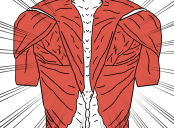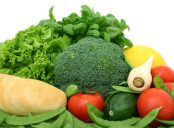Keto Diet Vegan: Combining the Power of Ketogenic and Vegan Diets

Introduction
The Keto Diet Vegan has gained significant popularity in recent years as a unique approach to blend the benefits of both a ketogenic diet and a vegan lifestyle. This article aims to provide a comprehensive overview of the Keto Diet Vegan, including its definition, types, popularity, quantitative measurements, differences between various versions, and a historical analysis of its pros and cons.
1. An Overview of the Keto Diet Vegan

The Keto Diet Vegan is a nutritional plan that combines the principles of a ketogenic and vegan diet. It focuses on consuming high amounts of healthy fats, moderate protein, and very low carbohydrates, while completely abstaining from animal products. By utilizing fat as the primary energy source instead of carbohydrates, this diet aims to achieve ketosis, a metabolic state in which the body burns fat for energy.
2. Understanding the Types and Popularity of the Keto Diet Vegan
There are several types of Keto Diet Vegan, each with its unique approach and popularity. Some of the popular versions include:
– Standard Keto Vegan Diet: This version strictly follows the macronutrient ratio of 70-75% fats, 20-25% protein, and only 5-10% carbohydrates.
– High-Protein Keto Vegan Diet: This variation emphasizes a higher protein intake, making up approximately 30% of the daily caloric intake, while maintaining a similar fat and carbohydrate ratio.
– Targeted Keto Vegan Diet: This approach allows for a small amount of carbohydrates to be consumed around workouts to provide extra energy without disrupting ketosis.
– Cyclical Keto Vegan Diet: This variant involves cycling between periods of strict ketosis and higher-carbohydrate days, typically suited for athletes.
The popularity of the Keto Diet Vegan has been steadily increasing, driven by a growing interest in plant-based diets and the proven benefits of the ketogenic approach. Celebrities and health influencers have also contributed to its popularity, raising awareness about the potential benefits of this diet.
3. Quantitative Measurements on the Keto Diet Vegan
Quantitative measurements play a crucial role in understanding the effectiveness and impact of the Keto Diet Vegan. Some essential measurements include:
– Ketone Levels: Measuring ketone levels using blood, breath, or urine tests helps determine if the body has entered a state of ketosis.
– Macronutrient Ratios: Tracking the intake of fats, proteins, and carbohydrates helps ensure compliance with the diet’s requirements and maintains the desired ratios.
– Weight Loss: Many individuals adopt the Keto Diet Vegan to achieve weight loss. Monitoring body weight, body fat percentage, and waist circumference provides quantifiable data on the diet’s effectiveness.
4. Exploring the Differences Between Keto Diet Vegan Versions
Despite all versions of the Keto Diet Vegan sharing a focus on high-fat, moderate-protein, and low-carbohydrate consumption, they differ in several aspects:
– Macronutrient Ratios: The ratios of fats, proteins, and carbohydrates can vary slightly between different versions of the Keto Diet Vegan.
– Protein Sources: While all versions emphasize plant-based protein sources, the specific food choices and quantities may differ based on personal preferences and individual requirements.
– Carbohydrate Allowance: Some versions allow for minimal or targeted carbohydrates, whereas others emphasize strict carbohydrate avoidance.
5. A Historical Review of the Pros and Cons of Different Keto Diet Vegan Approaches
The historical analysis of the Keto Diet Vegan reveals both benefits and potential drawbacks. Some advantages include:
– Weight Loss: The Keto Diet Vegan has shown promising results in promoting weight loss due to the increased fat burning and reduced calorie intake.
– Improved Insulin Sensitivity: Ketosis has been associated with improved insulin sensitivity, potentially benefiting individuals with diabetes or insulin resistance.
– Enhanced Mental Clarity: Some individuals report increased mental clarity and focus while following the Keto Diet Vegan.
However, potential drawbacks include:
– Nutritional Deficiencies: Eliminating animal products may increase the risk of nutrient deficiencies, such as vitamin B12, iron, and omega-3 fatty acids. Proper supplementation and a well-planned diet are essential to mitigate these risks.
– Limited Food Choices: Following a strict Keto Diet Vegan may limit food options, making it challenging to obtain a diverse range of nutrients.
– Adaptation Period: The transition to ketosis may cause initial side effects, such as fatigue, dizziness, and cravings, which can discourage some individuals.
[INSERT VIDEO HERE]
Conclusion
The Keto Diet Vegan combines the power of ketosis and veganism, providing a unique approach to nutrition for those seeking weight loss and health benefits. Understanding the different versions, quantitative measurements, and historical pros and cons allows individuals to make informed decisions when adopting this dietary approach. However, it is crucial to consult with a healthcare professional or registered dietitian before starting any significant dietary changes to ensure it aligns with personal health goals and requirements.





















